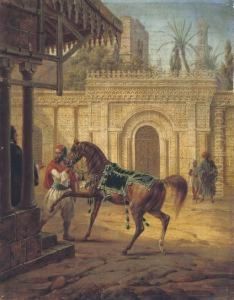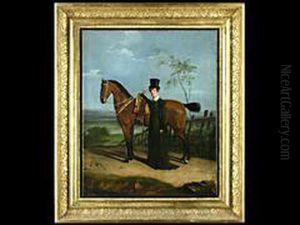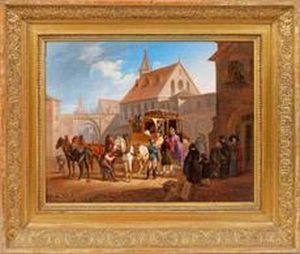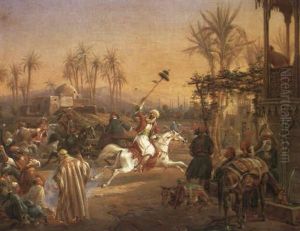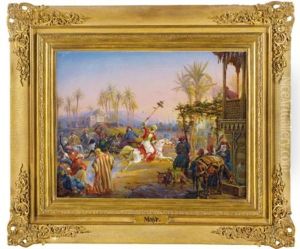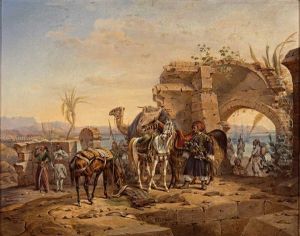Heinrich Von Mayr Paintings
Heinrich Von Mayr, born in 1812 in Munich, Germany, was a distinguished painter associated with the German Romantic movement, a period that emphasized emotion, individualism, and a reverence for nature. Despite the relatively limited recognition he receives today compared to some of his contemporaries, Von Mayr's contributions to the art world during the 19th century were significant, particularly in the realms of landscape and architectural painting. His works are characterized by their meticulous detail, vibrant color palette, and the ability to capture the sublime beauty of nature and the grandeur of Gothic and Renaissance architecture.
Von Mayr received his artistic training at the Academy of Fine Arts Munich, which was a hub for aspiring artists in Germany during the early 19th century. Under the tutelage of prominent figures in the German art scene, he honed his skills and developed a distinct style that merged realism with the romantic ideals of his time. Throughout his career, Von Mayr traveled extensively across Europe, drawing inspiration from the varied landscapes and historical architectures he encountered. These travels were reflected in his paintings, which often featured iconic European landmarks depicted with a romantic flair that appealed to the tastes of the era.
Despite his talent and the quality of his work, Heinrich Von Mayr never achieved the level of fame or commercial success enjoyed by some of his contemporaries. Nevertheless, his paintings were appreciated by a discerning clientele that valued the romantic depiction of landscapes and architectural scenes. After his death in 1871, Von Mayr's works continued to be admired by art enthusiasts and collectors, particularly in Germany, where he is remembered as a skilled practitioner of the Romantic style. Today, his paintings can be found in various art museums and private collections, serving as a testament to his artistic legacy and the enduring appeal of the Romantic movement in art.

